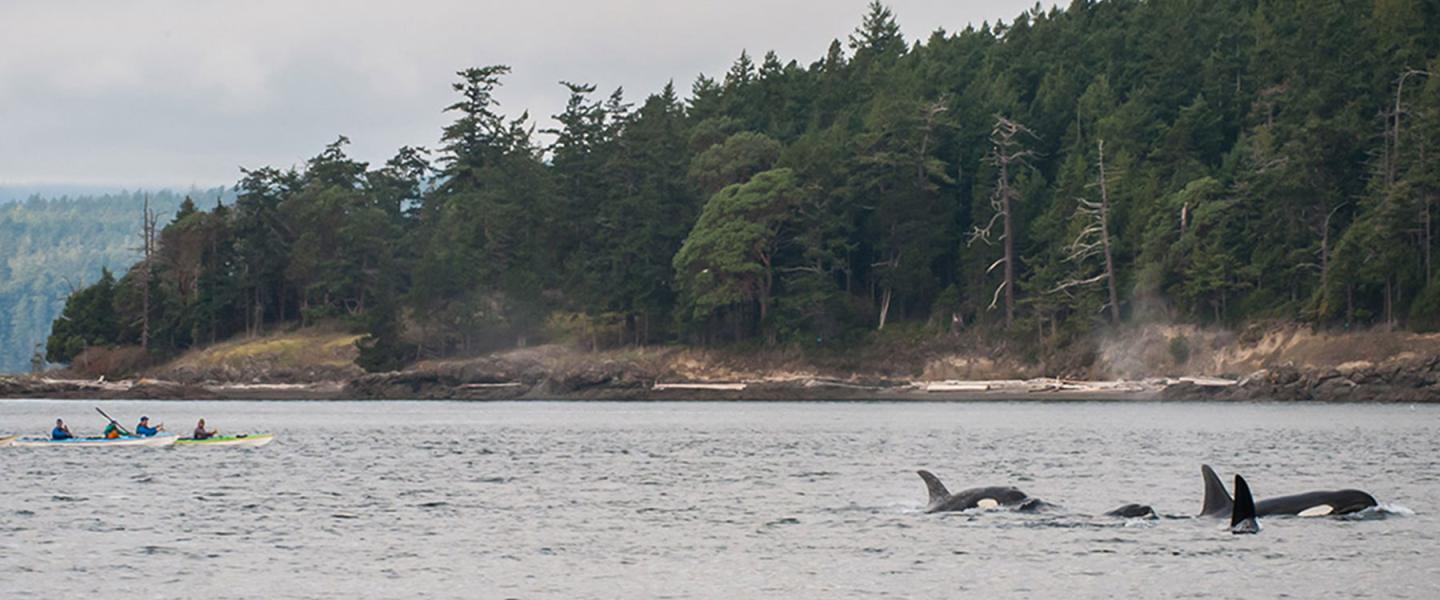
Yesterday Captain Gabe and I took a full group of wonderful people aboard the M/V Seahawk. We started our trip by heading north towards the Canadian border (which isn’t too far from Roche Harbor) and a place called Kelp Reef. This is a rocky reef that is not too far underwater and does happened to be covered with a pretty sizeable Bull Kelp forest. We soon found some Transient (Bigg’s) Orcas! They often like to hunt in these shallow rocky reefs. Their main prey choice is Harbor Seal and Harbor Seals spend a lot of time hunting for their food in these kelp forests. Now usually during this time of year in these same waters we are more commonly seeing the Southern Resident Orcas (those are the more well known ones that eat salmon and travel in pods – J, K, and L). The Southern Residents usually come here starting in the summer to eat schools of Chinook Salmon that are heading for the Fraser, Skagit, and other rivers that empty into the Salish Sea, but we have not seen any of those pods in about a month now and that’s probably due to the extremely low number of Chinook Salmon coming back this summer.
We have been seeing the most Transient (mammal – eating) orcas that I have ever seen though. They have traveling everywhere throughout the islands and even aggregating in larger groups than normal. They still look like other orcas, but they do have a few of their own unique physical and behavioral characteristics. Transient Orcas (T’s for short) are larger on average, have pointer dorsal fins, and have only white in their saddle patches while the Southern Residents have more rounded fins and will often have black mixed into their saddle patches. Behaviorally T’s usually travel in smaller groups, usually just one matriline (a family of orcas where the oldest female leads and is traveling with her progeny sometimes covering several generations) but occasionally two or more matrilines will travel and hunt together for extended periods of time.
This groups that we saw swimming through Boundary Pass was traveling and it was two matrilines the T46’s and some of the T37’s. These designations are for the individual matriarchs –T46 and T37 – and their family that usually travels with them. Both of them are pretty impressive, T37 was born in 1979 and is a grandmother and T46 was born in 1964 and is a great-grandmother and was even captured for a little while in an attempt to use her for shows in captivity, but was released. In all there were eight orcas traveling together through Boundary Pass towards Turn Point. We watched one of the young ones for a long while practice little dives and porpoising (how they go really fast) We watched these two families for awhile. They for some reason changed direction a lot, and it was hard to tell whether they were being indecisive, tracking some sort of potential food item, or distancing themselves for the multiple tankers that were motoring through.
After we left those pretty sweet orcas we drove by the Turn Point Light house, which is a State Park, the end of the U.S.A. and has a beautiful, enormous cliff face. We then navigated through the skinny passes of the inner islands and saw a plethora of Harbor Seals playing in kelp beds and also lounging on some rocks. We even saw two Bald Eagles atop two trees on Spieden Island! I don’t think we could’ve pack much more fun in even if we tried! Whale folks, until next time.